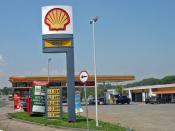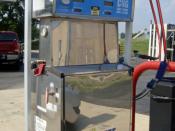Introduction
Petrol is a liquid obtained from petroleum and used mainly as a fuel for motor vehicles. A fuel is petrol that can be burned (to provide heat or power). When the fuel is burned, it emits complex mixtures of compounds that lead to the formation of smog and other potentially toxic pollutants. Of all the petroleum that is extracted from the earth, about 84% is burned as a fuel (1). Concerns over rising pollution have encouraged research to focus on reducing the world's dependence on petroleum and this has consequently driven the shift to alternative fuels such as ethanol, methanol, electricity, liquefied petroleum gas (LPG), bio-diesel, hydrogen, compressed natural gas (CNG) and liquefied natural gas (LNG). Alternative fuels are those that can be derived from non-crude oil resources or fuels that are combined with petroleum. Alternative fuel vehicles can make an important contribution to helping the world's transportation sector decrease its reliance on petroleum.
Driving alternative fueled vehicles could reduce the level of vehicle emissions, and choosing domestically produced alternative fuels, instead of imported oil could help reduce the trade deficit, create jobs, and promote economic activity. This article will focus on two alternatives fuels, ethanol and compressed natural gas.
Ethanol
The liquid ethanol or ethyl alcohol can be used as a fuel when blended with petroleum or when in its original state. Ethanol is made by fermenting almost any material that contains starch. Grains such as corn, sorghum, potatoes, sugarcane and other farm plants and agricultural wastes are also suitable. As an alternative vehicle fuel, it is usually blended in a mixture of 85% ethanol and 15% unleaded petroleum to form what is called E-85. It can also be used in 10% blends with petroleum to oxygenate the petroleum called E-10 or Gasohol (2).
Compressed Natural Gas...


